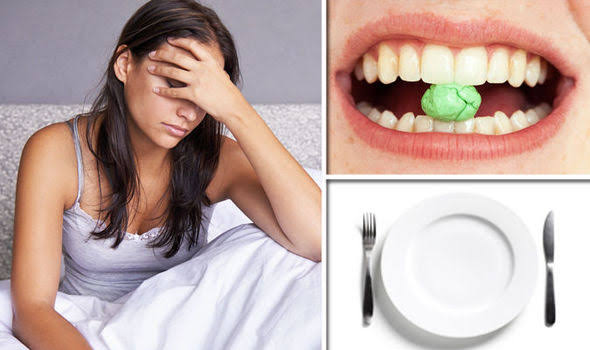
Chewing gum causes headaches and migraines
A recent study showed that chewing gum by children and adolescents leads to headaches, and that stopping this habit alone seems sufficient to treat headaches without the need for any medications or other tests.
In the study, which was published in the journal Pediatric Neurology, scientists asked 30 pediatric and adolescent patients who suffered from headaches or migraine symptoms to stop chewing gum for a month. 26 of them showed a significant improvement in symptoms, and 19 people completely recovered from their headaches. .
To confirm the result, the scientists asked twenty patients whose symptoms had improved to resume chewing gum. The headache symptoms returned to all of them immediately, which confirms a close connection between gum and headaches, despite the small number of patients participating in the study.
Headaches are very common among children, and become more common at puberty, especially among girls, according to studies. Previous research has linked headaches in children and adolescents to stress, fatigue, lack of sleep, and irregular meal timing, in addition to video games and smoking.
The researchers in the study believe that chewing gum is one of the reasons that is no less important, especially since they noticed that this habit is common among a large number of children and adolescents who suffer from headaches.
In an attempt to explain the results, some scientists suggest that artificial sweeteners, such as aspartame, found in gum, stimulate headaches, while other scientists tend to explain the matter in another way, as they believe that chewing gum causes fatigue in the jaw joints, and that this alone is enough to stimulate headaches. Headache and migraine pain.
Dr. Nathan Wimberg, author of the study, supports the second explanation, commenting: “Gum contains only small amounts of aspartame, and if these artificial sweeteners were responsible for headaches, we would find a significant correlation between it and the sweetened drinks that people use on a daily basis, which contain large amounts of aspartame.” These sweeteners.
He added: “People continue to chew gum even after the taste of the sweeteners disappears minutes later, which places an additional load on the jaw joints, which are already the most used in the body.”
The researchers believe that the results of the study alone are sufficient to find solutions to headache problems among children and adolescents for a very large number of them, without resorting to any drugs, tests or medical follow-up. The magic recipe is for them to stop chewing gum only.






